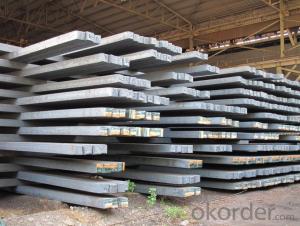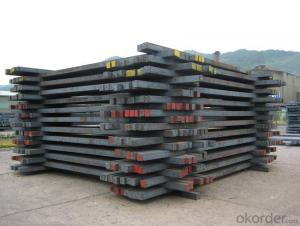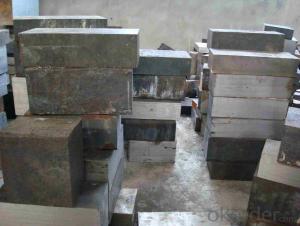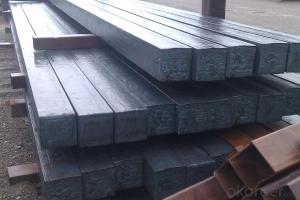Z36 BMP Rolled Steel Coil Construction Roofing Construction
- Loading Port:
- Tianjin
- Payment Terms:
- TT OR LC
- Min Order Qty:
- 100 m.t.
- Supply Capability:
- 10000 m.t./month
OKorder Service Pledge
OKorder Financial Service
You Might Also Like
Structure of Z36 BMP Rolled Steel Coil Construction Roofing Construction

Description of Z36 BMP Rolled Steel Coil Construction Roofing Construction
PPGI is made by cold rolled steel sheet and galvanized steel sheets as baseplate, through the surface pretreatment (degreasing, cleaning, chemical conversion processing), coated by the method of continuous coatings (roller coating method),
and after roasting and cooling. Zinc coating: Z60, Z80, Z100, Z120, Z180, Z275, G30, G60, G90
Alu-zinc coating: AZ60, AZ80, AZ100, AZ120, AZ180, G30, G60, G90

Main Feature of Z36 BMP Rolled Steel Coil Construction Roofing Construction
1) Excellent corrosion resistance: The zinc layer provides a good protection of Pre-painted Galvanizeed Steel Sheet.
2) High heat resistance: The reflective surface of the material aids in efficiently reflecting the sunlight away and in turn reducing the amount of heat transmitted. The thermal reflectivity converts into energy savings.
3) Aesthetics: Pre-Painted Galvanized steel sheet is available in plethora of patterns and multiple sizes as per the requirements that given by our customers.
4) Versatility: can be used in the various areas.Standard seaworthy export packing: 3 layers of packing, inside is kraft paper, water plastic film is in the middle and outside GI steel sheet to be covered by steel strips with lock, with inner coil sleeve.
Applications of Z36 BMP Rolled Steel Coil Construction Roofing Construction
1. Construction and building: roofing; ventilating duct; handrail; partition panel;etc.
2. Electric appliance: refrigerator; washing machine; refrigerator; DVD;etc.
3.Transportation: oil tank; road sign; etc.
4.Agriculture:barn; etc.
5.Others:vending machine; game machine; etc. 
Specifications of Z36 BMP Rolled Steel Coil Construction Roofing Construction
| Classified symbol | Yield Point Minimum N/mm2 | Tensile Strength Minimum | Elongation Minimum % | Application | ||||
| N/mm2 | Nominal Thickness mm (t) | |||||||
| JIS | Yogic | 0.25-0.4 | 0.4-0.6 | 0.6-1.0 | 1.0-1.6 | |||
| G3312 | specification | |||||||
| CGCC | CGCC | -205 | -270 | -20 | -21 | -24 | -24 | Commercial |
| CGCD | CGCD | --- | 270 | --- | 27 | 31 | 32 | Drawing |
| --- | CG340 | 245 | 340 | 20 | 20 | 20 | 20 | Structural |
| CGC400 | CG400 | 295 | 400 | 16 | 17 | 18 | 18 | Structural |
| CGC440 | CG440 | 335 | 440 | 14 | 15 | 16 | 18 | Structural |
| CGC490 | CG490 | 365 | 490 | 12 | 13 | 14 | 16 | Structural |
| CGC570 | CG570 | 560 | 570 | --- | --- | --- | --- | Structural |
| ASTM Designation | Yield Point Minimum | Tensile Strength Minimum | Elongation Minimum % | Application | Q/BQB 445-2004(China standard) | ASM A653/A653M | JISG 3312 | |
| ksi(MPa) | ksi(MPa) | TDC51D+Z | (CS TYPE A+Z) | CGCC | ||||
| A653(M)-99 CS TYPE A,B,C | --- | --- | --- | Commercial | TDC52D+Z | CGCD | ||
| A653(M)-99 FS | --- | --- | --- | Lock Forming | TS250GD+Z | (G250+Z) | - | |
| A653(M)-99 DS | --- | --- | --- | Drawing | TS300GS+Z | (G300+Z) | CGC 400 | |
| A653(M)-99 SS Grade33(230) | 33(230) | 45(310) | 20 | Structural | TS350GD+Z | (G350+Z) | CGC490 | |
| A653(M)-99 SS Grade37(255) | 37(255) | 52(360) | 18 | Structural | TS550GD+Z | (G550+Z) | CGC570 | |
| A653(M)-99 SS Grade40(275) | 40(275) | 55(380) | 16 | Structural | ||||
| A653(M)-99 SS Grade50(345) | 50(345) | 65(450) | 12 | Structural | ||||
| A653(M)-99 SS Grade80(550) | 80(550) | 82(570) | --- | Structural | ||||
FAQ of Z36 BMP Rolled Steel Coil Construction Roofing Construction
We have organized several common questions for our clients,may help you sincerely:
1. How Can I Visit There?
Our company is located in Tianjin City, China, near Beijing. You can fly to Tianjin Airport Directly. All our clients, from home or aboard, are warmly welcome to visit us!
2. How Can I Get Some Sample?
We are honored to offer you sample.
3. Why choose CNBM?
1, ISO, BV, CE, SGS approved.
2, Competitive price and quality.
3, Efficient service team online for 24 hours.
4, Smooth production ability(50000tons/month) .
5, quick delivery and standard exporting package.
6, Flexible payment with T/T, L/C, Paypal, Kunlun bank, etc .
- Q:How are steel billets tested for mechanical properties?
- Steel billets are tested for mechanical properties through various methods such as tensile testing, hardness testing, and impact testing. Tensile testing involves subjecting the billets to tension until they fracture, measuring their strength and ductility. Hardness testing determines the billets' resistance to indentation or penetration, indicating their overall strength. Impact testing assesses the billets' ability to absorb energy by subjecting them to a sudden load, measuring their toughness. These tests ensure that the steel billets meet the required mechanical properties for their intended applications.
- Q:What are the specifications for tool steel billets used in the manufacturing of cutting tools?
- The specifications for tool steel billets used in the manufacturing of cutting tools can vary depending on the specific application and requirements. However, there are some general specifications that are commonly followed. 1. Composition: Tool steel billets are typically made from high-carbon alloy steels that contain elements such as chromium, molybdenum, vanadium, tungsten, and cobalt. These alloying elements enhance the hardness, wear resistance, toughness, and heat resistance of the tool steel. 2. Hardness: Tool steel billets are required to have a high hardness to withstand the demanding cutting conditions. The hardness is typically measured on the Rockwell C (HRC) scale, and it can range from 58 HRC to 65 HRC or even higher for certain applications. 3. Wear Resistance: Cutting tools are subjected to abrasive wear during operation. Therefore, tool steel billets are formulated to have excellent wear resistance properties to ensure a longer tool life. This is achieved by incorporating alloying elements that form carbides, such as chromium and vanadium, which increase the hardness and wear resistance of the tool steel. 4. Toughness: While hardness and wear resistance are important, tool steel billets must also possess sufficient toughness to withstand the high impact forces generated during cutting. High toughness ensures that the cutting tools do not fracture or chip easily, even under severe cutting conditions. 5. Heat Resistance: Cutting tools are often exposed to high temperatures during operation, especially in high-speed cutting applications. Tool steel billets must have good heat resistance to prevent softening or deformation at elevated temperatures. This is achieved by adding alloying elements like molybdenum and tungsten, which contribute to the heat resistance properties of the tool steel. 6. Machinability: Tool steel billets should have good machinability to enable the production of complex cutting tool geometries with high precision. Proper selection of alloying elements and heat treatment processes can enhance the machinability of tool steel billets. It is important to note that the specific specifications for tool steel billets may vary depending on the specific cutting tool application, the material being cut, and the machining conditions. Therefore, it is crucial to consult with the tool steel manufacturer or supplier to determine the exact specifications required for a particular cutting tool application.
- Q:What is the role of steel billets in the construction of stadiums and arenas?
- Steel billets play a crucial role in the construction of stadiums and arenas. These billets, which are essentially semi-finished steel products, serve as the raw material for various structural components used in the construction process. One of the primary applications of steel billets in stadium and arena construction is for the fabrication of steel beams and columns. These structural elements provide the necessary support and stability to the overall structure. Steel billets are first heated and then passed through rolling mills to acquire the desired shape and size required for these beams and columns. Moreover, steel billets are also used in the production of steel reinforcing bars, commonly known as rebars. These rebars are used to reinforce the concrete structures within stadiums and arenas, such as foundations, walls, and floors. The combination of steel and concrete enhances the structural integrity and load-bearing capacity of these structures, making them capable of withstanding heavy loads, vibrations, and external forces. Additionally, steel billets are utilized in the construction of roof trusses and frames, which provide support for the stadium or arena's roofing system. These steel components offer the necessary strength and durability to withstand the weight of the roof, while also ensuring the overall stability of the structure. Furthermore, steel billets are employed in the production of seating structures, staircases, handrails, and other architectural elements within stadiums and arenas. These components not only contribute to the overall aesthetics of the venue but also provide safety and comfort to spectators. In summary, steel billets are indispensable in the construction of stadiums and arenas. They are transformed into various structural and architectural components that provide strength, stability, and durability to the overall structure. By utilizing steel billets, stadiums and arenas can be built to withstand the demands of large crowds, harsh weather conditions, and the test of time.
- Q:What are the potential applications of steel billets in the automotive industry?
- Steel billets have a wide range of potential applications in the automotive industry. They can be used in the production of various components such as engine parts, chassis, suspension systems, and body panels. Steel billets offer excellent strength, durability, and high melting points, making them ideal for ensuring the safety and reliability of vehicles. Additionally, their versatility allows for customization and lightweight designs, contributing to improved fuel efficiency and overall performance.
- Q:How are steel billets coated or painted?
- Steel billets can be coated or painted through several methods. One common technique is hot-dip galvanizing, where the billets are immersed in a bath of molten zinc. This process forms a protective zinc coating on the surface of the steel, preventing corrosion. Another method is electroplating, which involves the deposition of a thin layer of metal, such as zinc or nickel, onto the billets using an electric current. Additionally, steel billets can be painted using various coating systems, such as powder coating or liquid paint, to provide a decorative finish or additional protection against rust and environmental factors.
- Q:What are the different methods of hardness testing for steel billets?
- Steel billets can be tested for hardness using various methods, each with its own advantages and levels of accuracy. Some commonly used methods are: 1. Rockwell hardness testing: This method determines hardness by measuring the depth of indentation caused by a specific load on the surface of a steel billet. The hardness value is derived from the depth of penetration, making it a convenient and quick test. 2. Brinell hardness testing: In this method, a spherical indenter is used to create an impression on the surface of a steel billet under a specific load. The diameter of the resulting impression is measured to determine the hardness value. Brinell testing is particularly useful for large billets or materials with a coarse microstructure. 3. Vickers hardness testing: Vickers testing involves using a pyramidal diamond indenter to create an impression on the surface of a steel billet. The hardness value is calculated based on the diagonal length of the impression and the applied load. Vickers testing is suitable for various materials, including steel billets. 4. Knoop hardness testing: Similar to Vickers testing, Knoop hardness testing also uses a pyramidal diamond indenter. However, the indentation shape is elongated and narrower, allowing for measurements on smaller or thinner samples. This method is often used for precise and microhardness testing. 5. Leeb hardness testing: Leeb testing is a portable and non-destructive method that uses an impact device to measure the rebound hardness of a steel billet. The device strikes the surface with a small ball and measures the velocity of the rebound, which is then converted into a hardness value. This method is commonly used for on-site or in-field measurements. 6. Ultrasonic hardness testing: Ultrasonic testing measures the hardness of a steel billet by transmitting ultrasonic waves through the material and measuring the time taken for the waves to travel through the billet. This data is then converted into a hardness value. Ultrasonic testing is non-destructive and suitable for large or thick billets. It's important to consider that each hardness testing method has its own limitations and factors to consider. The choice of method will depend on factors such as the size, shape, and surface condition of the steel billet, as well as the desired accuracy and convenience of the testing process.
- Q:How are steel billets used in the manufacturing of structural components?
- The manufacturing of structural components heavily relies on steel billets, which are an essential raw material. These billets, usually square or round in shape, are produced through continuous casting, a process that solidifies molten steel into a semi-finished product. After the formation of steel billets, they undergo further processing using different techniques like hot rolling, forging, or extrusion. Hot rolling includes heating the billets and passing them through a sequence of rollers to shape them into desired profiles, such as beams, channels, or angles. This method is crucial for achieving the necessary dimensions, strength, and surface finish. Forging is another technique employed with steel billets, involving heating the billets and shaping them using compressive forces. It is primarily used for manufacturing components that require enhanced strength and durability, like crankshafts, connecting rods, or turbine blades. Extrusion, on the other hand, is a specialized process that utilizes heated billets to create complex shapes by forcing them through a die. This technique is commonly utilized in the production of tubular components, such as pipes, tubes, or hollow sections. These components are extensively used in the construction of structures like bridges, buildings, or infrastructure. Steel billets play a critical role in the manufacturing of structural components by providing the necessary raw material that can be shaped using various fabrication techniques. Their adaptability and versatility make them an indispensable component in the construction industry, ensuring that buildings and structures possess the required strength and durability to withstand different loads and environmental conditions.
- Q:What are the different surface defects found in alloy steel billets?
- Some common surface defects found in alloy steel billets include cracks, laps, seams, scabs, and surface scale. These defects can occur during the manufacturing process or as a result of handling and transportation.
- Q:Can steel billets be cold rolled?
- No, steel billets cannot be cold rolled. Cold rolling is a process that involves reducing the thickness of a metal sheet or strip by passing it through a series of rollers at room temperature. However, steel billets are primarily used as raw material for the production of steel bars, rods, and other long products through a process known as hot rolling. In this process, the steel billets are heated to high temperatures and then passed through a series of rolling mills to achieve the desired shape and dimensions. Cold rolling is not suitable for steel billets as it requires heating to make the steel more malleable and easily deformable, which is not possible with the solid, unheated billets.
- Q:What is the role of steel billets in the manufacturing of conveyor systems?
- Steel billets play a crucial role in the manufacturing of conveyor systems. These billets serve as the raw material for the production of various components and parts that make up the conveyor system. Firstly, steel billets are used to create the framework and structure of the conveyor system. They are shaped and cut to form the main frame, supports, and other structural elements that provide stability and strength to the entire system. The high strength and durability of steel make it an ideal material for this purpose, ensuring that the conveyor system can withstand heavy loads and operate efficiently. Secondly, steel billets are utilized in the production of rollers and pulleys, which are essential components of conveyor systems. These rollers and pulleys are responsible for guiding and moving the conveyor belt, enabling the smooth and continuous flow of materials. Steel billets are forged and machined to create these components, ensuring their reliability and longevity even under demanding working conditions. Additionally, steel billets are also used to manufacture various brackets, connectors, and fasteners that hold the different parts of the conveyor system together. These components provide the necessary connections and attachments, ensuring the proper assembly and functioning of the conveyor system. Furthermore, steel billets can be molded and shaped into customized parts as per the specific requirements of the conveyor system. This flexibility allows conveyor manufacturers to design and produce conveyor systems that are tailored to the unique needs of different industries and applications. In summary, steel billets are integral to the manufacturing of conveyor systems as they provide the raw material for the construction of the system's framework, rollers, pulleys, brackets, connectors, and other components. Their high strength, durability, and flexibility make steel billets an essential ingredient in creating reliable and efficient conveyor systems.
1. Manufacturer Overview |
|
|---|---|
| Location | |
| Year Established | |
| Annual Output Value | |
| Main Markets | |
| Company Certifications | |
2. Manufacturer Certificates |
|
|---|---|
| a) Certification Name | |
| Range | |
| Reference | |
| Validity Period | |
3. Manufacturer Capability |
|
|---|---|
| a)Trade Capacity | |
| Nearest Port | |
| Export Percentage | |
| No.of Employees in Trade Department | |
| Language Spoken: | |
| b)Factory Information | |
| Factory Size: | |
| No. of Production Lines | |
| Contract Manufacturing | |
| Product Price Range | |
Send your message to us
Z36 BMP Rolled Steel Coil Construction Roofing Construction
- Loading Port:
- Tianjin
- Payment Terms:
- TT OR LC
- Min Order Qty:
- 100 m.t.
- Supply Capability:
- 10000 m.t./month
OKorder Service Pledge
OKorder Financial Service
Similar products
New products
Hot products
Related keywords

































